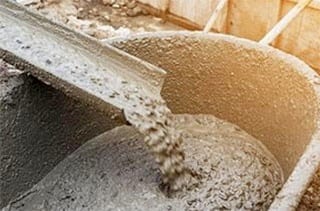3 Ways Asphalt and Concrete Are Affecting the Planet
Motor vehicle traffic and its accompanying pollution have been a major environmental concern for decades. With approximately 1.2 billion vehicles in operation today and more on the way, Earth’s atmosphere continues to absorb massive amounts of harmful emissions from a billion internal combustion engines on a daily basis.
However, the problems don’t end with emissions. Roads and parking lots have greatly expanded to accommodate the growing number of vehicles, creating another series of problems. The materials used, primarily asphalt and concrete, negatively impact the environment in three ways.
1. They Deplete resources.
Asphalt is a petroleum-based product. Concrete requires rock, sand and a fabricated cement component to strengthen the material and hold the pavement together. Drilling, mining, processing and applying these materials to the roadway are resource-intensive processes.
Fortunately, industry innovation has led to meaningful progress toward resource conservation. Road construction companies have developed ways to reuse existing concrete and asphalt by remixing it with virgin materials. While this reduces resource depletion, producing asphalt and concrete still uses a considerable amount of energy.
2. They Pollute water.
Road and parking lot projects usually require elaborate drainage networks to remove rainwater from the surfaces and prevent flooding. Flowing over pavement exposes water to pollutants surface debris and asphalt. This polluted water eventually flows municipal sewage networks, which empties into lakes, rivers, and streams.
3. They Generate Harmful Atmospheric Emissions.
Petroleum-based asphalt is a high-VOC (volatile organic compound) substance. As the product is converted to asphalt, significant quantities of harmful gases are released into the atmosphere. Likewise, the process of producing cement for concrete requires high levels of heat and generates substantial VOC emissions.
The application and curing of the applied asphalt add even more harmful material to the air. Additionally, some areas still use high-VOC paints for striping roads and parking lots, adding another unsustainable element to the process of road and parking lot construction.

Interim Solutions and Initiatives
Asphalt and concrete are the only widely adopted materials trusted to deliver the requisite durability for roads and parking lots. However, road construction engineers are currently working on sustainable alternatives.
To minimize the depletion of the Earth’s resources, paving companies have developed technology to reuse and recycle asphalt and concrete materials. One system allows the equipment to strip and rework existing pavement before reapplying it to the same roadbed.
As a partial solution to the water drainage issue, roadway engineers are developing and testing porous concrete and asphalt that allows water to drain through the material into the ground below. The initial challenge with this technology was making the porous material sufficiently durable for mass roadway consumption, but this has been accomplished by recent innovations.
As for reducing atmosphere-damaging high-VOC striping and marking paints, BioStripe® produces a high quality bio-based paint for striping roadways and parking lots. Produced from renewable soybean oil, BioStripe® provides a sustainable line striping solution while minimizing environmental impact.
Does your community or organization have initiatives in place for monitoring and mitigating your infrastructure’s environmental impact?
Are you looking to resurface your driveway with an eco-friendly product? Learn more about the safer way to rejuvenate & seal your driveway, BioSealSafe™.



